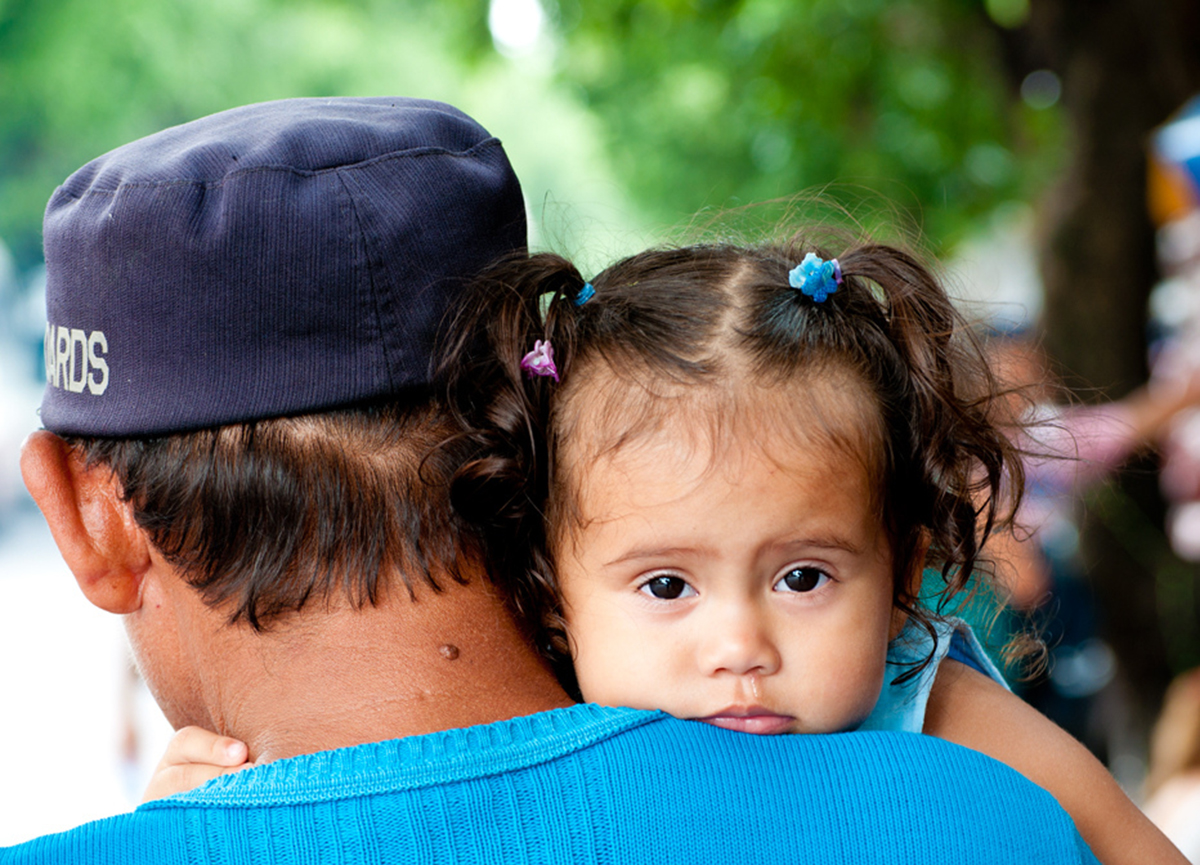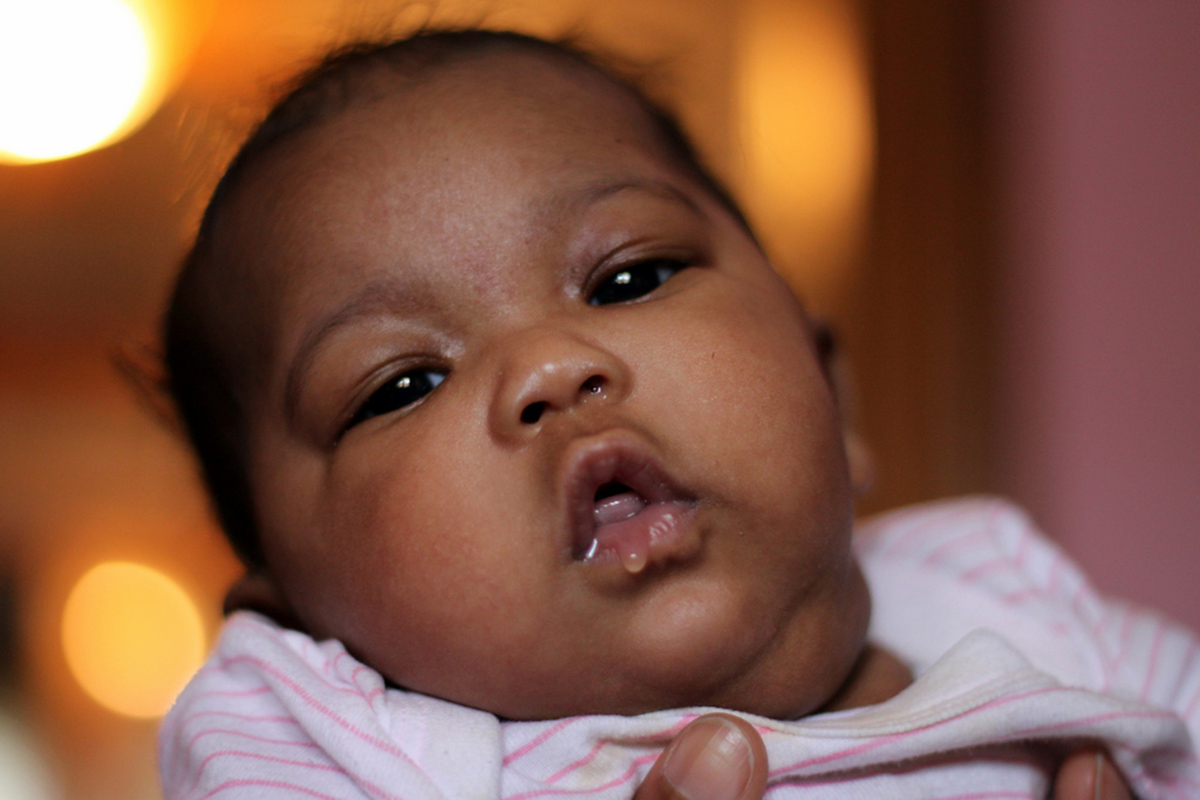Respiratory Syncytial Virus, referred to as RSV, is a contagious infection that causes respiratory illness. The condition can be serious in some situations.

RSV Outbreaks Are Very Common in Children
Most RSV infections occur in late fall through early spring, although infections can happen at any time of the year.
The infection is spread easily, which explains why most children are infected at some point. The virus is transmitted in a few different ways. Breathing in respiratory droplets from someone who is infected with the virus is one way it is spread. Respiratory droplets become airborne when a person sneezes or coughs and saliva escapes into the air.
The virus can also live on objects, such as toys and doorknobs. When a person touches a contaminated object or surface with the virus and then touches their nose, eyes or mouth, they can become infected. Since young children are not the best at washing their hands and they often have their hands in their mouth, the virus spreads quickly through daycare centers and preschools. Infants and young children also often catch the infection from older siblings who have the virus.
Diagnosing RSV
A diagnosis of RSV is often made based on symptoms and certain diagnostic tests. Symptoms of RSV in children usually include a runny or stuffy nose, fever, which is often low-grade, and a cough. Some children also develop a headache and sore throat. When adults contract RSV, they usually have cold symptoms including a runny nose and cough.
If the infection affects mostly the upper airway, the symptoms mentioned above are the most common. Some children may also develop lower airway symptoms, which can cause narrowing of the airways and wheezing.
After a physical exam and medical history is taken, a swab of the inside of the patient’s nose may be taken. The procedure is quick and involves inserting a cotton swab into the nasal cavity to obtain a small sample of mucus. The fluid is analyzed in the lab to detect the presence of the respiratory syncytial virus.
See Also: Flu Spray More Effective Than Flu Shots For Young Children
A chest X-ray is often recommended to determine if airway swelling is present. If a child or infant tests positive for RSV, they can usually be treated at home. If symptoms are serious, the child may require hospitalization. Very young infants with RSV, especially those less than three months old, may be hospitalized as a precaution in order to be closely monitored even if symptoms are not severe.
Complications Of RSV Can Be Serious
Most cases of RSV are not serious and usually resolve in a week or two, but certain signs and symptoms indicate complications may be developing, and the condition needs immediate treatment.

Respiratory Distress Can Develop
RSV complications can develop in any child, but they are most common in very young infants or children.
Children with other medical conditions, such as heart defects, are also at an increased risk of developing complications.
One of the possible complications of RSV is a middle ear infection. Bacteria can travel behind the eardrum and cause an inflammation of the middle ear, which leads to an infection. There also appears to be a link between having RSV as a young child and developing asthma later in life, according to the Mayo Clinic.
When RSV affects the lower airway including the bronchioles and the lungs, a few different complication can develop including bronchiolitis and pneumonia. Both conditions can lead to trouble breathing.
Signs a child need immediate medical attention due to RSV include a high fever, dehydration and shortness of breath. In young infants, refusing to take fluids, unusual inactivity, dry lips and a decrease in wet diapers are all signs of dehydration.
Some infants and children also develop retractions, which involves forcefully pulling the ribs inward. Retractions occur when a baby is working hard to breath and is using accessory muscles.
RSV Treatment
Treatment for RSV is aimed at reducing symptoms, keeping the child comfortable and preventing complications. Since the infection is caused by a virus, antibiotics are not given unless a secondary bacterial ear infection or pneumonia develops.
At home, parents may want to use a cool-mist vaporizer to decrease nasal congestion, which may help their baby breathe easier. Avoid using stream, which can lead to burns. Over the counter medication, such as acetaminophen, can be given to decrease fever and headache.
Encourage your child to drink fluids to avoid dehydration. Children may be more accepting of small amounts of fluids frequently if they are not interested in drinking.
In children who are too young to blow their nose, mucus can be removed from their nose by using a bulb syringe. Older children should be encouraged to blow their nose gently.
If the lower airways are affected, some children may be prescribed breathing treatments to open up the bronchial tubes and lungs. In children who develop more serious symptoms, hospitalization may be required. If children require hospitalization, it may be to monitor their condition closely or to provide treatment, which cannot be given at home.
See Also: Are Parents Aware of Their Child's Asthma Symptoms?
Intravenous medication or fluids may also be needed in order to treat dehydration. Children who have low oxygen levels will be given supplemental oxygen. In the most severe cases, a child may temporarily need the assistance of a mechanical ventilator to help with breathing.
- www.cdc.gov/rsv/clinical/labtesting.html
- http://www.mayoclinic.org/diseases-conditions/respiratory-syncytial-virus/basics/complications/con-20022497Photo courtesy of Simon Daniel Photography by Flickr: www.flickr.com/photos/simonnpowell/8192001809
- Photo courtesy of Casschin by Flickr: www.flickr.com/photos/casschin/4375640511

